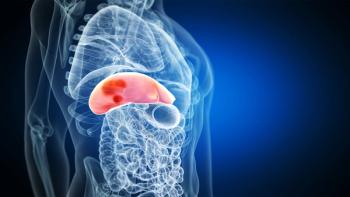
At-Home Oncology Care Reduces Hospitalizations and Outpatient Visit Times
Oncology Home-Hospitalization may represent a feasible alternative to standard ambulatory care and allow patients to spend significantly less time in the outpatient clinic.
It may be feasible to shift certain oncology procedures from the outpatient clinic to patient homes without compromising safety or efficacy, according to data from a study published in the Journal of Clinical Oncology Global Oncology.1 Furthermore, this high-quality, patient-centered approach may improve quality of life (QOL) and significantly reduce hospital visits and wait times, compared with standard ambulatory care.
Findings from a randomized trial (NCT03668275) revealed that full Oncology Home-Hospitalization (OHH) implementation resulted in significantly less hospital visits. Partial OHH yielded a 45% reduction in wait times for therapy administration in outpatient units at 2 hours and 36 minutes ± 1 hour 4 minutes compared with 4 hours ± 1 hour 4 minutes (P < .001) in the standard ambulatory care setting (SOC). Among patients who received OHH, 88% reported a high level of satisfaction with system and 77% reported that the care system positively impacted their quality of life (QOL).
By the conclusion of the trial, 60% of all patients reported a preference for OHH over SOC. In addition, the introduction of this care delivery system did not yield any new safety concerns.
“Today, the globally increasing cancer burden has a significant impact on public health,” noted study authors. “The results of this trial demonstrated that a shift of particular procedures from the outpatient clinic to the patients' homes offers a high-quality and patient-centered alternative for a large proportion of patients with cancer.”
Researchers assessed the relationship with OHH and quality of life (QOL) by conducting a randomized-controlled trial, which compared the intervention against current (SOC). There were 74 patients in each cohort. The study was based out of a cancer center in the AE Groeninge general hospital of Kortijk, Belgium. In the OHH cohort, certain subcutaneous cancer drugs were administered at home (full OHH), and home nursing assessment were conducted prior to ambulatory systematic cancer therapy (partial OHH).
According to the standard of care, each patient who is to receive therapy administration must first undergo blood collection and intravenous line access provision; a nursing review, toxicity scoring, and vital signs monitoring must also take place. In the case of partial OHH, these assessments were conducted in the patient home 1 day prior to administration in the oncology day care unit (DCU), whereas in full OHH, all injections were also administered in the patients’ home (except for the first administration of each consecutive treatment cycle). Azacitidine and bortezomib (Velcade) were the 2 drugs chosen for at-home administration. All at-home visits were conducted by oncology nurses employed by the hospital.
Patient-reported outcome measures (PROM) offered updates on QOL and other related end points; the 5 main assessments included QOL, service use and cost data, safety data, patient-reported satisfaction and preferences, and model efficiency. Participant responses were collected during 12 weeks of therapy.
Eligible participants were patients older than 18 years who had an ECOG score greater than or equal to 2, lived within a 30 minutes’ drive from the hospital, and had a diagnosis of either a solid tumor or hematologic malignancy. Patients could be receiving either curative or noncurative treatments, or supportive therapies (such as blood transfusions) at the DCU. Barriers from participation included problematic venous access, preexisting problems with therapy administration, simultaneous radiotherapy treatment, language or communication difficulties, or a therapy plan which included more than 12 weeks of continuous treatment. Stratification between the 2 cohorts was based on the type of treatment (only subcutaneous therapies were eligible for full home administration), prior systematic therapy, and age.
Health-related QoL and End Points
Patients without prior systematic cancer treatment reported better health-related QoL (76.19 vs 72.60, P =.039). Similarly, baseline scores on EQ-5D VAS (positive association of 0.28; P < .001) and baseline scores on CCS (negative association of –0.65; P < .001) were found to have an impact on health-related QOL.
Service Use and Cost Data
Researchers calculated that patients who received full OHH had 7.6 less DCU visits than those who received SOC (average of 5.6 ± 3.0 and 13.2 ± 4.6, respectively, P = .011). Furthermore, the average number of hospitalization days in the intervention group was 0 (interquartile range = 0; range, 0-0), compared with 3.5 among those who received SOC (interquartile range = 12; range, 0-12).
Patients who received partial OHH, however, did not experience a difference in number of DCU visits (6.8 ± 2.5 and 7.5 ± 3.1, respectively, P > .05) or hospitalization days compared with the control group (average of 3.8 ± 10.6 for the intervention group v 2.8 ± 6.8 for the control group, P > .05).
Safety
No adverse events (AEs) were associated with model implementation. Among the OHH cohort, 48 patients shared that they felt as safe at home as in DCU, and 7 reported feeling safer in their homes. One patient reported feeling safer in the DCU.
Eight patients experienced a medical error during their general cancer treatment (2 in the SOC group and 2 in the intervention group), but these errors were deemed to be unrelated to the intervention.
Satisfaction and Preferences
After 12 weeks of OHH (full or partial), 43 out of 49 patients reported a high level of satisfaction with the care model. Although 3 patients reported dissatisfaction, they still requested the OHH be continued for the duration of their treatment. Out of 52 patients in the intervention group, 40 reported that OHH had a positive impact on their QOL. Furthermore, while 66 out of 110 patients (60%) of patients declared a preference for OHH over SOC, 72 out of 106 (68%) patients stated that they would recommend the experimental care model to fellow patients.
Model Efficiency
Overall, 399 home visits were conducted within the context of this trial; 47 visits entailed drug administration and 352 visits were conducted to prepare patients for their upcoming therapy appointment. There were 12 at-home visits, which resulted in a canceled DCU visit based on the information gathered during the home visit. With SOC, the average wait time was determined to be (2 hours 36 minutes ± 1 hour 4 minutes v 4 hours ± 1 hour 4 minutes; P < .001), whereas, with OHH, the average wait time was calculated to be 2 hours and 2 minutes; there was therefore a 45% reduction in wait times following implementation.
“Given the increasing number of patients with cancer in need of systemic treatment and the evolution toward safer treatment options, (partial) oncologic home-hospitalization offers a high-quality and patient-centered alternative to the current ambulatory cancer care for a large proportion of patients with cancer,” the study authors concluded. “Authorities should encourage such initiatives and provide health care providers with suitable legal and financial frameworks allowing implementation of such innovative transmural care models in daily practice. Nevertheless, further research is needed to investigate the financial impact of such models.”
Reference
Cool L, Missiaen J, Debruyne P, et al. Oncologic home-hospitalization delivers a high-quality and patient-centered alternative to standard ambulatory care: results of a randomized-controlled equivalence trial. JCO Global Oncol. 2021;(7):1564-1571. doi:10.1200/GO.21.00158
Newsletter
Knowledge is power. Don’t miss the most recent breakthroughs in cancer care.
























































































